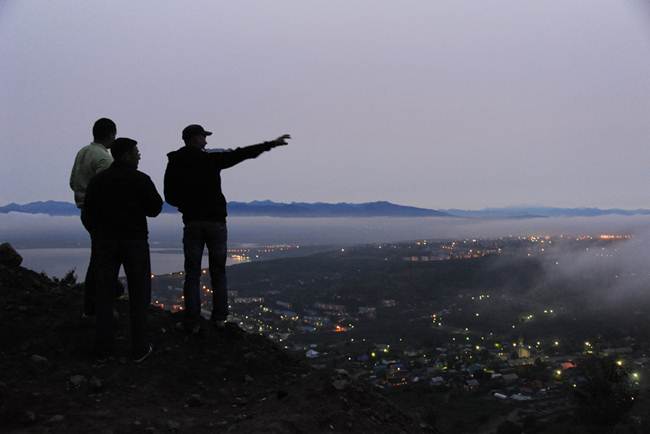Kamchatka - a place where nature is sublime and unpredictable, paint vivid and unique landscape. Although Kamchatka lies at similar latitudes to Great Britain, cold arctic winds from Siberia combined with the cold Oyashio sea current see the peninsula covered in snow from October to late May.
"Nalychevo" - Nature Park, located in the valley of the river Nalycheva limited framing of its chain of volcanoes. Many species of native animals and plants listed as endangered. Included in the UNESCO World Heritage List.
There is considerable variation, however, between the rain-drenched and heavily glaciated east coast and the drier and more continental interior valley. In the heavily glaciated Kronotsky Peninsula.
The summer months, when maximum temperatures range from 15 to 20 °C (59 to 68 °F), are popular with tourists, but a growing trend in winter sports keeps tourism pulsing year-round. The volcanoes and glaciers play a role in forming Kamchatka's climate, and hot springs have kept alive dozens of species decimated during the last ice-age. The Kamchatka Peninsula, the Commander Islands, and Karaginsky Island constitute the Kamchatka Krai of the Russian Federation.
Summers are moderately cool, and the winters tend to be rather stormy though rarely producing lightning.
The fog and dense clouds. In some places there is no visibility at a distance of 4-5 meters.
Here in mid-July, the flowers bloom and spreading fog, the sun beats down and the snow.
It seems that the people live in harmony with nature.
And then - a bright sun and a dazzling blue sky.
The flora of Kamchatka has about 1,200 species of higher plants.
These orchids predators grow everywhere in Kamchatka.
Three brothers - a group of rocks protruding from the water, located at the entrance to Avacha Bay. As the story goes, the three brothers have protected the bay from the large waves coming from the ocean, but petrified, but even in this state continue to protect the cove from danger.
Bird Island. The island is home to countless bird land, sea and shore birds.
In the area of Avacha Bay famous catch crabs and flounder.
The lake in the crater of the volcano Mutnovsky, which contains almost all the elements of the periodic table. Melt water flowing from glaciers, lakes enhances the color.
Kamchatka - the land of contrasts: thick crust of ice under the hot sun.
Mutnovsky active volcano located in the southern part of the peninsula. The absolute height of 2323 m above sea level. Scientists estimate that the volcano has erupted at least 16 times. The most violent eruption occurred in 1848. The last time the volcano erupted in 2000.
Fumaroles - cracks and holes, which are located in the craters on the slopes and at the foot of volcanoes. They are a source of hot gases.
Canyon dangerous. This prehistoric times flowed magma.
The boiler Griffin Ivanova - thermal spring, named after Russia's largest hydrogeologist VV Ivanov. Depth griffin is 200 meters, the water temperature reaches 75,6 ° C. A source of water have very high concentrations of various chemical substances such as arsenic, calcium, iron, boron, lithium, silicon, magnesium, sodium, potassium, barium, antimony, bromine, chlorine, iodine, zinc, lead, tungsten, strontium.
The famous Kamchatka crabs.
Volcanoes View Klyuchevskoy, Unnamed and Krestovsky.
Mountain poppies.
Volcanoes and Acute Flat Tolbachik.
View of the volcano from the shore Sheveluch Kamchatka River.
Field base volcanologists "Tolbachik" at the foot of Tolbachik volcano.
Active volcano Karymskii in Kronotsky State Nature Biosphere Reserve.
Residents of Petropavlovsk watch the sunset on the hill target in Petropavlovsk-Kamchatsky.
Sled dog race.
Lake Takholoch.
Waterfall on the river Tahkoloch.
Zhupanovsky volcano.
































No comments:
Post a Comment